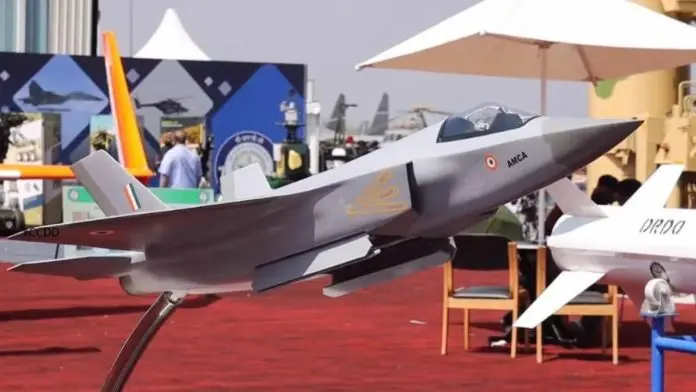Context:
The Cabinet Committee on Security (CCS) has approved the project for the design and development of India’s fifth-generation fighter jet, Advanced Medium Combat Aircraft (AMCA).
More on the news
- The Aeronautical Development Agency (ADA) under the Defence Research and Development Organisation (DRDO) will be the nodal agency for executing the programme and designing the aircraft.
- The manufacturing agency will be Hindustan Aeronautics Limited (HAL).
- After the approval, the ADA plans to have the first flight of AMCA in four and a half to five years. The full development of the aircraft is expected to take around 10 years from now.
- Five prototypes will be built before HAL begins the manufacturing of the aircraft.
Background:
- Discussions for developing the AMCA started in 2007. The initial plan was to jointly develop the aircraft with Russia under a Fifth Generation Fighter Aircraft (FGFA) programme.
- However, in 2018, India withdrew from the FGFA project and planned to develop
Advanced Medium Combat Aircraft (AMCA)
- The AMCA will be India’s indigenous fifth-generation fighter aircraft which will be bigger than other fighters in the Indian Air Force (IAF) inventory.
- The development of AMCA will build upon the expertise gained in the development of Light Combat Aircraft (LCA) Tejas.

LCA Tejas is a 4.5-generation single-engine multi-role aircraft.
- The aircraft will make India the 4th nation after the US, Russia, and China to have developed such advanced jets.
Currently, there are only four operational fifth-generation fighters in the world –
- U.S. – F-22 Raptor and F-35A Lightning II
- China – J-20 Mighty Dragon,
- Russia – Sukhoi Su-57
Key Features of AMCA:
- Stealth: The 25-tonne twin-engine aircraft will have advanced stealth features to avoid detection by enemy radar.
- Fuel & Weapons: The aircraft will have a large, concealed internal fuel tank of 6.5-tonne capacity, and an internal weapons bay for a range of weapons, including indigenous weapons, to be buried in its belly.
- Engine: The AMCA Mk1 variant will have the US-built GE414 engine of the 90kN (kilonewton) class. The AMCA Mk2 will be more advanced and will be powered by a stronger engine of 110kN to be developed indigenously by the Gas Turbine Research Establishment (GTRE) in collaboration with a foreign defence major.
- This will be developed indigenously by DRDO’s Gas Turbine Research Establishment (GTRE) in collaboration with a foreign defence major.

Significance of AMCA:
- The most striking feature of AMCA that sets apart from the existing fourth-generation is its stealth features. It will have a low electro-magnetic signature, which will make it difficult for enemy radar to detect it.
- It will have powerful sensors and new weapons, so it will be able to register the signatures of enemy aircraft and take them out.
- An internal weapons bay and a bigger internal fuel tank are part of fifth-generation aircraft like AMCA as external fuel tanks and externally attached weapons leave a huge signature and are easy to detect for radar.
- The inclusion of a comprehensive Integrated Vehicle Health Management (IVHM) system to keep track of multiple structural components, and to assess the condition of the aircraft in real-time will ensure a higher utilisation time and smaller serviceability or maintenance periods for the aircraft.
IAF’s dwindling numbers:
- The IAF currently has around 30 fighter squadrons, against the sanctioned strength of 42.
- This number is expected to go down further as squadrons of MiG-21s, MiG-29s, Jaguars, and Mirage 2000s are scheduled to be phased out by the middle of the next decade.
- The IAF has indicated that it requires seven AMCA squadrons to begin.
- However, considering the threat of two-front war, the planned inductions of LCA Tejas and AMCA will not fulfil the huge requirement of IAF.

